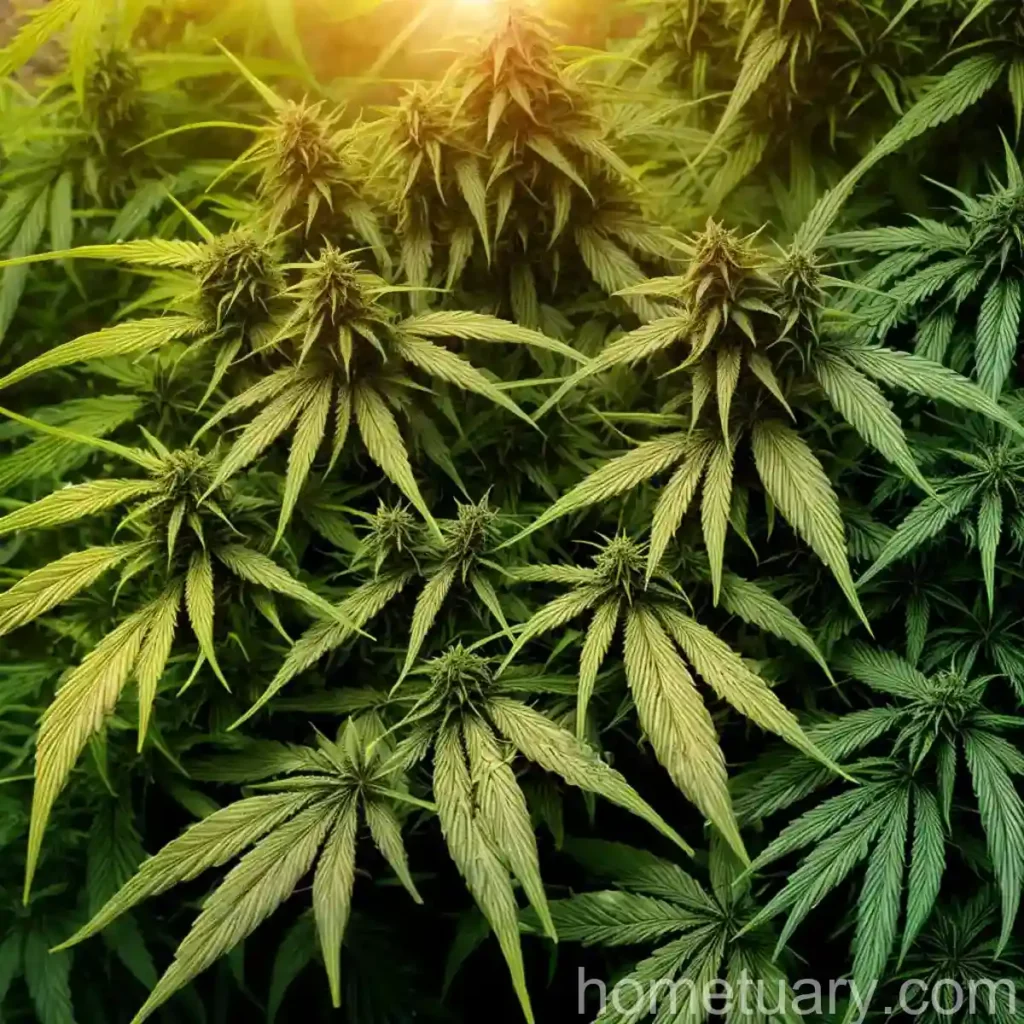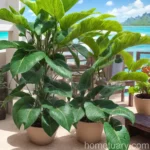The Versatile and Medicinal Indian Hemp (Apocynum cannabinum)
Plants have been an integral part of human life for centuries, providing sustenance, shelter, and medicine. The Indian hemp (Apocynum cannabinum) is one such plant that has been valued for its medicinal properties and diverse cultural uses. In this comprehensive guide, we will delve into the characteristics, cultivation, folklore, and medicinal significance of the Indian hemp. The plant has a rich history and holds substantial ethnobotanical importance in various cultures. Let’s explore the various facets of this intriguing plant, from its growth stages to its symbolism in culture and traditional uses in herbal medicine.
Indian Hemp Plant Profile
Indian hemp, scientifically known as Apocynum cannabinum, is a perennial herbaceous plant that belongs to the Apocynaceae family. It is native to North America, where it thrives in diverse habitats ranging from open woodlands to prairies. This herbaceous plant is known for its lance-shaped leaves, small bell-shaped flowers, and slender pods containing numerous seeds. The plant typically grows to a height of 3 to 4 feet and has a bushy appearance.
Indian Hemp Plant Description
- Common Name: Indian hemp
- Scientific Name: Apocynum cannabinum
- Family: Apocynaceae
- Plant Type: Perennial herb
- Height: 3 to 4 feet
- Leaves: Lance-shaped
- Flowers: Small bell-shaped
- Fruits: Slender pods
- Native Range: North America
Cultivation of Indian Hemp
Cultivating Indian hemp requires an understanding of its specific requirements for water, sunlight, fertilizer, soil, and pruning. Proper care and maintenance are essential for ensuring healthy growth and maximizing its medicinal properties.
Water
Indian hemp plants thrive in moist to wet soil conditions. While they prefer well-drained soil, they can tolerate periods of waterlogging. Adequate watering is crucial, especially during the initial growth stages and dry spells. However, it is important to avoid overwatering, as it can lead to root rot and other moisture-related issues.
Sunlight
Indian hemp plants exhibit a preference for full to partial sunlight. They typically thrive in open woodlands, meadows, and similar habitats where they receive ample sunlight throughout the day. When grown in garden settings, it is advisable to provide them with at least 6 to 8 hours of direct sunlight.
Fertilizer
These plants are not heavy feeders and can thrive in moderately fertile soil. While they can adapt to various soil types, incorporating organic matter into the soil prior to planting can provide a beneficial nutrient boost. A balanced, all-purpose fertilizer can be applied once or twice during the growing season, following the manufacturer’s recommendations.
Soil
Indian hemp plants are adaptable and can grow in a wide range of soil types, including sandy, loamy, and clayey soils. However, they thrive in well-drained, moderately fertile soils with a slightly acidic to neutral pH range. Amending the soil with organic matter can improve its texture and nutrient content, promoting healthy growth.
Pruning
Pruning Indian hemp plants is generally minimal, as they have a naturally bushy and compact growth habit. Removing dead or damaged stems and spent flowers can help maintain the plant’s appearance and encourage continuous blooming. Light pruning can be carried out in late winter or early spring to shape the plant and remove any winter damage.
Propagation of Indian Hemp
Indian hemp can be propagated through seeds or by division. The seeds are typically sown directly in the garden after the last frost, as they require a period of cold stratification to germinate. Division can be carried out in early spring by carefully separating the plant clumps and replanting them in suitable locations. Both methods have been used to propagate this versatile plant in various settings, including home gardens, herbal medicine farms, and conservation projects.
Container Cultivation
In addition to traditional garden cultivation, Indian hemp can be successfully grown in containers, making it a viable option for urban gardeners and individuals with limited outdoor space. When cultivating Indian hemp in containers, it is important to select a pot with adequate drainage holes to prevent waterlogging. A well-draining potting mix that retains moisture without becoming waterlogged is ideal for container cultivation. Regular watering and occasional fertilization can support healthy growth and flowering.
Popularity in Container Gardens
Indian hemp has garnered popularity among container garden enthusiasts, owing to its attractive foliage, delicate flowers, and adaptability to container cultivation. Its compact size and bushy growth habit make it an excellent choice for adding greenery and floral interest to patios, balconies, and other confined spaces.
Common Uses of Indian Hemp
The Indian hemp plant has been valued for its diverse applications, including its traditional medicinal uses, ecological significance, and cultural relevance. Let’s explore its various uses and the ways in which it has contributed to human well-being and ecological balance.
Medicinal Uses
Indian hemp has a rich history of traditional medicinal uses, with several Native American tribes employing its roots and leaves in herbal remedies. The plant is known for its potential diuretic, laxative, and cardiac tonic properties. It has been used in traditional medicine for addressing conditions such as edema, heart ailments, and constipation. Moreover, its historical use in traditional medicine underscores its significance as a valuable plant with potential health benefits.
Ethnobotanical Uses
The Indian hemp plant holds substantial ethnobotanical importance, being deeply entrenched in the traditional knowledge and practices of various indigenous communities. It has been used in ceremonial rituals, folk medicine, and cultural traditions, signifying its role as a symbol of cultural heritage and resilience.
Ecological Significance
Beyond its cultural and medicinal significance, Indian hemp contributes to the ecological balance in its native habitats. Its flowers attract pollinators such as bees and butterflies, aiding in the pollination of nearby plants. In addition, its adaptability to various soil types and moisture conditions enhances the biodiversity of the ecosystems it inhabits.
Common Diseases and Pests
Indian hemp, like many other plants, is susceptible to certain diseases and pests that can affect its growth and overall health. Understanding the common issues that plague Indian hemp plants is essential for implementing timely preventive measures and treatments.
Disease Diagnosis
The occurrence of leaf spot diseases, root rot, and powdery mildew are among the common issues that can impact Indian hemp plants. Leaf spot diseases manifest as dark lesions on the foliage, while root rot results in yellowing and wilting of the plant. Powdery mildew, characterized by white powdery patches on the leaves, can hinder photosynthesis and weaken the plant.
Common Pests
Indian hemp plants may attract pests such as aphids, caterpillars, and spider mites. Aphids feed on the plant’s sap, causing stunted growth and distorted foliage. Caterpillars are known to feed on the leaves, potentially defoliating the plant. Spider mites, on the other hand, cause stippling and webbing on the foliage, leading to a decline in the plant’s overall health.
Botanist’s Tips for Indian Hemp Plant Care
Maintaining the health and vigor of Indian hemp plants requires attention to detail and adherence to best practices in plant care. Here are some valuable tips from botanists and plant care experts to ensure the optimal growth and well-being of Indian hemp.
-
Monitor Moisture Levels: Regularly check the soil moisture to ensure that it is consistently moist but not waterlogged. Adjust the watering frequency based on the plant’s specific hydration needs.
-
Inspect for Pests and Diseases: Periodically inspect the plant for signs of pests and diseases, taking prompt action to address any issues that arise. Early detection and intervention can prevent the escalation of pest and disease problems.
-
Provide Adequate Sunlight: Position the plant in a location that receives sufficient sunlight, as this is crucial for promoting robust growth and flowering.
-
Prune Spent Flowers: Remove faded flowers to encourage continuous blooming and maintain the plant’s appearance. Pruning also helps prevent the development of seed pods, redirecting the plant’s energy towards vegetative growth and flower production.
-
Select Well-Draining Soil: Use a well-draining potting mix when cultivating Indian hemp in containers. Ensure that the soil allows excess water to drain freely, preventing waterlogging and root rot.
Fun Facts About Indian Hemp
Delving into the world of Indian hemp unveils some fascinating and noteworthy aspects that contribute to its allure and cultural significance. Here are a few fun facts about Indian hemp that shed light on its historical, ecological, and medicinal importance.
- The genus name Apocynum is derived from the Greek words apo, meaning “away from,” and kyno, meaning “dog,” alluding to the plant’s historical use as a dog-repelling substance.
- Indian hemp has a long history of use in traditional Native American medicine, with various tribes utilizing different parts of the plant for medicinal and ceremonial purposes.
- The plant’s fibrous stems traditionally served as a source of cordage and textiles, demonstrating the multifaceted utility of Indian hemp.
- The root of the Indian hemp plant has been employed in traditional medicine as a diuretic and laxative, with potential applications in addressing conditions related to water retention and constipation.
Links to External Resources
Curious to learn more about Indian hemp and its diverse facets? Explore the following resources for a deeper understanding of this intriguing plant.
-
Indian Hemp (Apocynum cannabinum): A Medicinal Plant with Unique Properties: This scholarly article provides insights into the medicinal properties and historical uses of Indian hemp, shedding light on its significance in traditional medicine.
-
Ethnobotanical Significance of Indian Hemp in Native American Cultures: Discover the ethnobotanical significance of Indian hemp in Native American cultures through this comprehensive publication, which highlights its traditional uses and cultural importance.
With its rich history, cultural significance, and potential health benefits, Indian hemp continues to captivate the interest of botanists, herbalists, and enthusiasts of traditional medicine. Its role in ethnobotanical practices and ecological sustainability further underscores its value as a plant with enduring relevance.
Conclusion
The Indian hemp plant, with its distinctive characteristics and multifaceted uses, stands as a testament to the intricate interplay between plants and human societies. From its medicinal properties and historical uses to its ecological significance and cultural relevance, Indian hemp embodies a rich tapestry of tradition, knowledge, and botanical marvel. Embracing the diverse dimensions of Indian hemp allows us to appreciate the enduring legacy and potential contributions of this versatile plant in modern contexts and future explorations of herbal remedies and ecological sustainability.
Keywords: Medicinal uses of Indian hemp, Apocynum cannabinum benefits, Indian hemp plant profile, Apocynum cannabinum characteristics, Growing Indian hemp plants, Indian hemp uses in traditional medicine, Apocynum cannabinum cultivation tips, Indian hemp plant description, Apocynum cannabinum properties, Indian hemp for herbal remedies, Apocynum cannabinum health benefits, Indian hemp plant care, Apocynum cannabinum folklore, Indian hemp plant anatomy, Apocynum cannabinum folklore, Indian hemp plant folklore, Apocynum cannabinum herbal medicine, Indian hemp ecosystem, Apocynum cannabinum plant family, Indian hemp plant history, Apocynum cannabinum ethnobotany, Indian hemp plant significance, Apocynum cannabinum habitat, Indian hemp ethnobotanical uses, Apocynum cannabinum traditional remedies, Indian hemp cultivation guide, Apocynum cannabinum medicinal properties, Indian hemp plant symbolism, Apocynum cannabinum folklore and myths, Indian hemp natural remedies, Apocynum cannabinum historical uses, Indian hemp traditional medicine, Apocynum cannabinum ethnopharmacology, Indian hemp plant folklore, Apocynum cannabinum traditional healing, Indian hemp plant symbolism and significance, Apocynum cannabinum plant morphology, Indian hemp scientific classification, Apocynum cannabinum ethnobotanical significance, Indian hemp plant symbolism in culture, Apocynum cannabinum traditional uses, Indian hemp plant growth stages, Apocynum cannabinum ethnobotanical history, Indian hemp plant traditional knowledge, Apocynum cannabinum plant symbolism, Indian hemp plant ethnobotanical importance, Apocynum cannabinum sustainable cultivation, Indian hemp plant biology, Apocynum cannabinum medicinal applications, Indian hemp plant traditional practices
References
- Khan, I. and Abourashed, E. (2011). Indian hemp (Apocynum cannabinum L.): Phytochemistry and Potential Pharmacological Activities. Journal of Ethnopharmacology. 137(1), 292-296. Journal Link
- Elias, T. and Dykeman, P. (2009). Edible Wild Plants: A North American Field Guide. New York, NY: Sterling Publishing. Book Link















